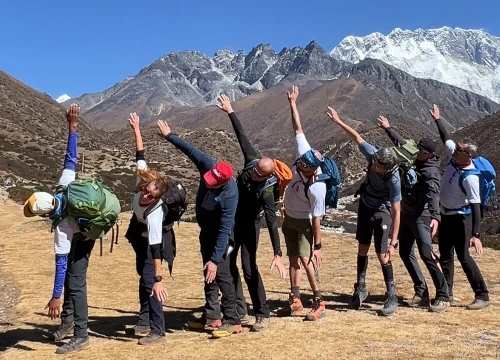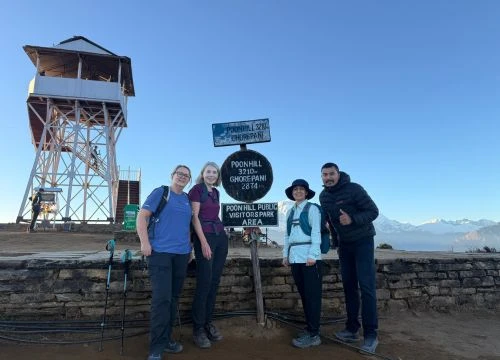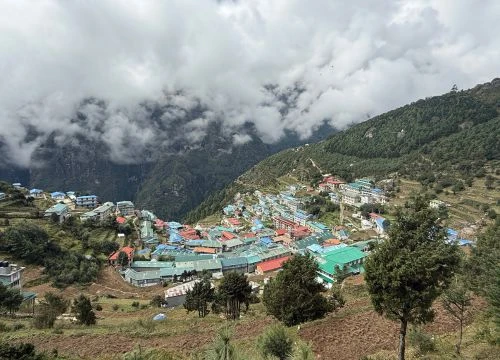Lukla: Overview
It is a small town at 2,845 metres in Nepal's Solukhumbu district, serving as the primary gateway to Everest. Notably, it's the starting point for treks to Everest Base Camp, Gokyo Lakes trek, and other Khumbu destinations. The town's main street is lined with teahouses and gear shops, catering to adventurers beginning the iconic Everest Base Camp trek.
Tenzing-Hillary Airport, named after the first climbers to summit Mount Everest, handles thousands of flights annually during peak seasons. Most trekkers fly to Lukla and then trek to Phakding, where they spend their first night before continuing toward higher elevations. Consequently, this airport is the critical entry point to the Everest region, drawing adventurers from across the globe.
Why Lukla Matters for Everest Trekkers
Factor | Significance |
Altitude | 2,845 metres - ideal for acclimatisation |
Distance to EBC | 8-10 days of trekking from Lukla |
Alternative Access | 7-10 days to reach Lukla trekking from Jiri; 2-3 days from Phaplu or Drive to Surkhe |
Annual Visitors | Thousands during spring and autumn seasons |
Without this airport, reaching the Everest region would require a lengthy trek from Jiri or Phaplu, adding significant time to the journey. Therefore, the flight to Lukla remains the fastest and most efficient way to begin exploring the Everest region. For those planning the full trek up to Everest Base Camp, it serves as the ideal launch point, allowing gradual acclimatisation before tackling steeper paths.
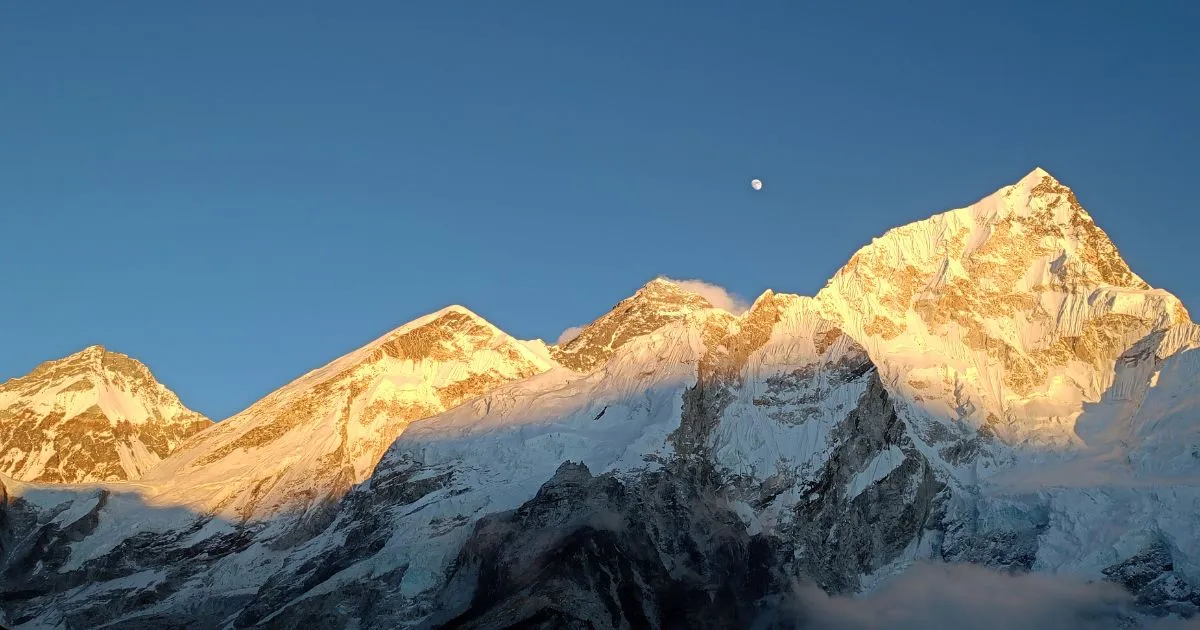
Lukla Airport (Tenzing-Hillary): Facts, History, and Features
Lukla Airport is often called the world's most dangerous airport due to its unique design. The runway, only 527 metres long with a 12% uphill slope, is carved into a ridge with mountains on one side and a valley on the other. Planes land uphill to slow down and take off downhill for speed, making flying into Lukla Airport a precise operation. Moreover, Lukla is frequently highlighted in travel narratives for its dramatic setting in this remote region of Nepal.
A Brief History
Built in 1964 under Sir Edmund Hillary's direction, the airport transformed access to the Khumbu region. Funded by the Himalayan Trust, local Sherpas constructed the original grass strip by hand. Furthermore, the runway was paved in 2001, and in 2008, the airport was renamed Tenzing-Hillary to honour the first Everest summiteers. Over the years, it has become synonymous with the start of many Everest treks.
Key Technical Specifications
Runway length: 527 meters
Gradient: 12% uphill slope
Elevation: 2,845 meters
Runway surface: Asphalt
Operating hours: Daylight only
Air traffic control: Visual flight rules with radio communication
Notably, no traditional control tower exists. Pilots flying to Lukla rely on visual cues, radio, and weather updates from ground staff. In addition, the Civil Aviation Authority of Nepal requires specialised training for pilots, ensuring only experienced aviators operate flights to Lukla. This setup underscores the challenges of travel to Lukla, where every detail matters for safety.
Airlines Operating to Lukla
Several airlines serve the Kathmandu to Lukla and Ramechhap to Lukla routes using small aircraft suited for mountain flying. These carriers prioritise reliability in Nepal's rugged terrain.
Current Operators
Tara Air: Operates Dornier 228 and Twin Otter aircraft
Summit Air: Flies Let L-410 Turbolet aircraft
Sita Air: Uses Dornier 228 aircraft
Former Operators
These airlines use aircraft designed for short takeoff and landing (STOL), ensuring reliability in Nepal's challenging terrain. Accordingly, ticket prices depend on season and departure point, but trekking agencies often book across multiple airlines for availability. Thus, choosing the right airline can make a significant difference in your adventure in the Everest region.
Ready to take the flight? Book with Nepal Everest Base Camp Co. for expert logistics and safe travel. This company acts as your trusted guide for seamless arrangements to get to Lukla.
Flight Routes and Departure Points
Kathmandu to Lukla
Flights to Lukla historically departed from Tribhuvan International Airport in Kathmandu. During off-peak months (May to Sep and Dec to Feb), some still do, but congestion during spring and autumn often causes delays. Nevertheless, the way from Kathmandu to Lukla provides a direct aerial glimpse of the Himalayas and serves as the traditional way to reach Lukla for trekkers heading to the Everest region.
Ramechhap to Lukla
Since 2019, most flights during peak seasons (March-May, September-November) operate from Ramechhap (Manthali) Airport, 130 kilometres east of Kathmandu. The drive takes 4-5 hours, but the flight from Manthali to Lukla is just 20 minutes, reducing delays. As a result, this route has become the standard way to reach there during busy periods.
Departure Point | Distance from Kathmandu | Drive Time | Flight Duration |
Kathmandu (TIA) | In city | 20-30 min | 30-35 minutes |
Ramechhap (Manthali) | 130 km | 4-5 hours | 20 minutes |
Flights to Lukla are operated early in the morning for stable weather conditions. Therefore, travellers must leave Kathmandu by 1:00 to 2:00 a.m. to reach Ramechhap for the flight from Manthali. This early start ensures you can start your trek promptly upon arrival and embark on your Everest adventure with minimal delays.
Cancellation and Reschedule Policy
Kathmandu Departures: Cancelled flights require new tickets for the next available flight, often needing coordination through airlines or agencies. This process can involve extra steps during high season.
Ramechhap Departures: Airlines automatically reschedule passengers on the next flight without new tickets, prioritising based on original booking order.
Extended weather delays may require overnight stays near Ramechhap. Therefore, stay in touch with airline staff for updates. Understanding these policies helps manage expectations for flights to and from Lukla.
Alternative Routes
Trek from Jiri to Lukla: A 7-10 day trek through villages, forests, and suspension bridges, following early Everest expedition routes. This overland option appeals to those seeking a classic approach.
Phaplu to Lukla: Fly to Phaplu (2,470 metres) and trek 2-3 days to Lukla via quieter Khumbu valleys. It offers a blend of air and foot travel.
Drive to Surke via Phaplu/Salleri: Combines road travel and trekking to join the EBC trek trail.
The trek to Lukla from these points allows immersion in lower-altitude landscapes before ascending. For those seeking faster options, a helicopter from Kathmandu to Lukla offers flexibility, though at a higher cost.
Helicopter Flights
Helicopter flights from Kathmandu to Lukla provide speed and flexibility, operating in better weather windows than fixed-wing flights. However, they are more expensive.
Shared charter: $500-800 per person(if available)
Private charter: $3,000-4,500 (max 4 passengers)
Flight time: 40-50 minutes
Weight limit: 200-250 kg total
The Lukla Flight Experience
The way to get to Lukla is by taking a Twin Otter or Dornier 228, carrying 15-20 passengers. As the plane leaves Kathmandu or Ramechhap, terraced fields give way to Himalayan peaks like Ama Dablam and Thamserku. Meanwhile, turbulence is common in narrow passes, but the flight experience is thrilling. Thus, it marks the start of your journey to the Everest region with an iconic ride.
Flight Experience Timeline
Boarding: 10-15 minutes for weight checks and seating
Takeoff: Steep climb over ridges
Mid-flight: 15-30 minutes of mountain and valley views
Approach: Runway appears suddenly between ridges
Landing: Quick touchdown on the uphill runway
Request a left-side window seat for the best mountain views. The landing at Lukla Airport is fast, with pilots using the slope to slow down, making it a memorable part of your adventure in the Everest region. Indeed, flying into Lukla Airport sets the tone for the challenges ahead.
Mountain Panoramas: What You'll See En Route
The journey to Lukla offers stunning views of Himalayan peaks. On clear days, the flight showcases:
Langtang Range: Langtang Lirung (7,227m), Dorje Lakpa (6,966m)
Everest Region: Numbur (6,958m), Thamserku (6,623m), Kongde Ri (6,187m)
Near Lukla: Kusum Kanguru (6,367m), Khumbila (5,761m)
Pilots use these peaks as navigation markers. On rare clear mornings, you might spot Everest (8,849 m) or Lhotse (8,516 m) from afar. Subsequently, photography is challenging due to window glare and vibration, but a high shutter speed helps. Upon arrival, Lukla offers stunning views, with mountains framing the valley, hinting at the grandeur of the trek up to Everest Base Camp.
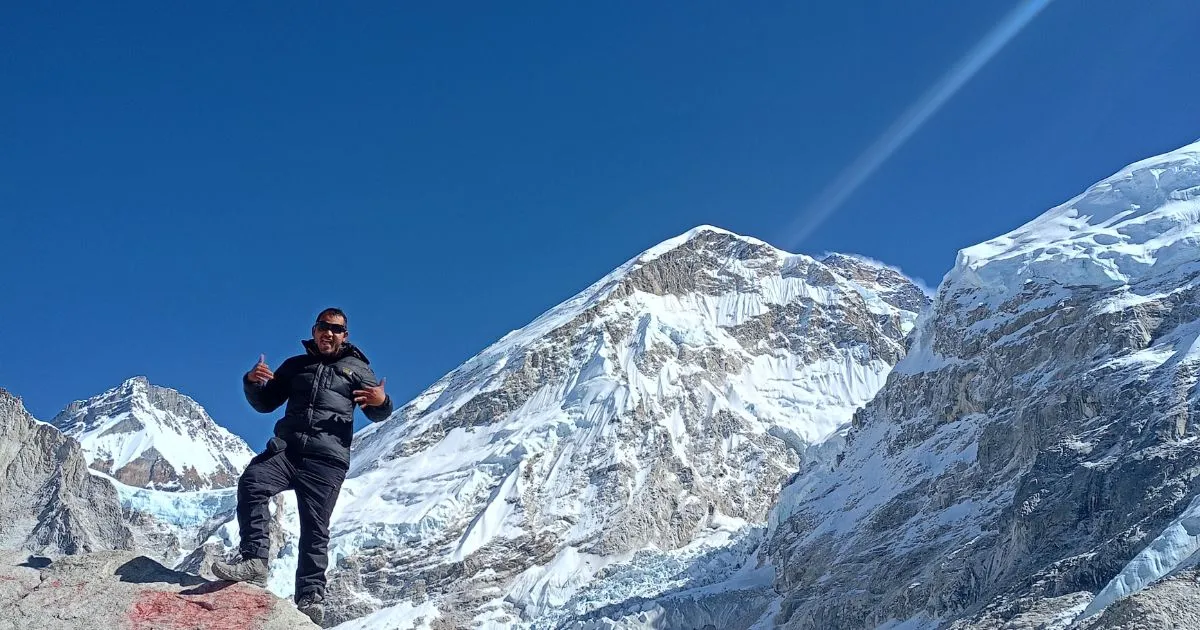
Safety, Weather, and Flight Cancellations
Weather Dependency
Weather conditions heavily influence flight schedules. Morning flights have the best visibility, but clouds or wind can ground planes quickly. Additionally, Lukla can be affected by rapid weather shifts, and pilots may turn back if conditions worsen. Consequently, flight cancellations or delays often stem from these unpredictable elements.
Historical Safety Record
Lukla is often described as the most dangerous airport in the world due to its terrain and weather, but safety has improved with better training and maintenance. Only STOL aircraft and certified pilots operate flights to Lukla. The historical record shows incidents, yet modern protocols mitigate risks effectively.
Safety Measure | Description |
Pilot Certification | Specialized training for Lukla |
Aircraft Type | STOL aircraft only |
Weather Monitoring | Real-time checks before departure |
Daylight Operations | No night flights |
Weight Restrictions | Strict baggage limits |
Thousands fly to Lukla safely each year. Therefore, choosing airlines like Tara Air or Summit Air minimises risks. Safety remains paramount for anyone heading to the Everest region.
Delays and Cancellations
Flight cancellations or delays are common, especially in monsoon or winter. Common causes include fog, high winds, or poor visibility. Since Lukla flights are highly weather-dependent, include buffer days in your itinerary to avoid missing international flights. In fact, flight delays can extend your stay in Kathmandu unexpectedly and affect your overall Everest Base Camp route planning.
Planning your route for the trek up to Everest Base Camp? Explore our Everest Base Camp Trek itinerary for day-by-day guidance and acclimatisation schedules. This resource helps align your trek with flight timings.
Booking, Tickets, and Baggage Tips
When and How to Book
Book your flight to Lukla early, especially for peak seasons (March-May, September-November). Trekking agencies often handle bookings, but independent travellers can book directly with airlines or agents in Kathmandu. Early reservations secure preferred slots for the way from Kathmandu to Lukla.
Price Range
Flight Type | Route | Price Range (One-Way) |
Fixed-Wing | Kathmandu to Lukla | $250-300 |
Fixed-Wing | Ramechhap to Lukla | $230-270 |
Helicopter (Shared) | Kathmandu to Lukla | $500-800 |
Helicopter (Private) | Kathmandu to Lukla | $3,000-4,500 |
The cost of a flight varies by season and demand. Off-peak bookings may save money. Consider these rates when budgeting for your adventure in the Everest region.
Luggage Limits
Checked luggage: 10-15 kg maximum
Excess charges: $1-2 per kg
Tip: Use duffel bags and keep essentials in carry-ons.
Strict limits ensure aircraft balance, crucial for mountain operations.
Understanding Refund and Cancellation Policies
Voluntary cancellations incur fees (10-25% penalty), while weather-related cancellations allow free rebooking. Moreover, travel insurance covering flight delays or cancellations is essential for recovering costs. Clarify policies with your agency and keep ticket documentation. A reliable guide as your trusted coordinator can navigate these during disruptions.
Disclaimer: Cancellation and refund fees may vary depending on the airline’s policy.
Best Time to Fly
Early-morning flights offer the best weather and views. The best time to visit Lukla is during spring (March-May) or autumn (September-November) for stable weather and clear skies. Monsoon (June-August) brings frequent flight cancellations, while winter (December-February) has fewer crowds but colder temperatures. Flight schedules align with these seasonal patterns.
Seasonal Comparison
Season | Weather | Flight Reliability | Crowd Level | Best For |
Spring | Clear, moderate | High | Very high | First-time trekkers |
Monsoon | Rainy, cloudy | Low | Low | Flexible travelers |
Autumn | Clear, cool | High | Very high | Photography enthusiasts |
Winter | Cold, clear | Moderate | Low | Solitude seekers |
Festivals like Dashain (October) increase demand, so book early. These periods are ideal to start your Everest adventure and plan your journey to Everest Base Camp.
What to Do If Your Flight Is Cancelled
Airline Rebooking: Airlines rebook on the next flight. Stay updated with staff.
Helicopter Alternatives: Shared or private helicopters are options for urgent travel, such as a helicopter from Kathmandu to Lukla.
Ground Transport: Trek from Jiri (7-10 days) or Phaplu (2-3 days).
Travel Insurance: Ensure coverage for delays and helicopter evacuations.
If the flight gets cancelled, these alternatives keep your plans on track. Consequently, having backup options helps you approach your Everest adventure with confidence.
Need flexible travel options? Learn more about our helicopter flight to Everest Base Camp for premium convenience and time-sensitive schedules.
Inside Lukla Town
Arrival Experience
Upon arrival in Lukla, the town buzzes with trekkers and porters. Most start their trek to Phakding (2,610 metres), a 3-4 hour walk along the Dudh Koshi River. Phakding offers teahouses for rest before the trek up to Everest Base Camp. You can begin from Lukla or directly to Phakding, depending on your schedule.
Local Amenities
ATMs: Limited, often empty in peak season
WiFi: Slow, paid in lodges
Gear Shops: Higher prices than Kathmandu
Pharmacies: Basic supplies only
Bring Nepali rupees and essentials from Kathmandu. Spend some time in Lukla to explore before heading to the Everest region. This is your last chance for urban comforts before the trail, making it an important part of your Everest preparation.
Local Culture and Community Insights
Lukla is a small town in Sherpa territory, where Tibetan Buddhism shapes daily life. Respect customs like walking clockwise around stupas and asking permission to photograph. Tourism drives the economy, so hire local guides, eat at teahouses, and tip fairly. Engaging with the community enriches your adventure in the Everest region.
Sustainability and Aviation Future in Lukla
Airport Modernization
Expanding Lukla Airport is challenging due to terrain. Proposals for runway extensions or navigation aids are under discussion but face environmental and funding hurdles. Any upgrades aim to enhance capacity while preserving the area.
Eco-Aviation Initiatives
Aviation impacts the Khumbu's ecosystem. Operators are exploring cleaner fuels, and carbon offset programmes fund reforestation. Meanwhile, travellers can reduce waste and support local businesses to promote sustainable tourism. Responsible practices ensure the gateway to the Everest region remains viable for future visitors and trekkers heading to Everest for generations to come.
Ready to embark on your adventure in the Everest region with confidence? Contact Nepal Everest Base Camp Co. for a responsible, well-organised journey.
Wrapping Up Your Lukla Journey
The Lukla flight is the most popular way to get to Lukla and start your Everest adventure. It blends adrenaline, awe, and practicality into an unforgettable journey to Everest. From takeoff in Kathmandu to the moment Lukla Airport, the most dangerous airport in the world, comes into view, passengers enter a world where mountains dominate, marking the start of an iconic experience.
Courage, preparation, and timing form the foundation of a successful Lukla experience. By understanding routes, respecting weather conditions, booking early, and including buffer days, you ensure smoother travel to Lukla. Embracing the unpredictability transforms challenges into meaningful parts of your trek up to Everest Base Camp.
Plan your journey smartly with a safe, scenic, and unforgettable flight to Lukla. Whether you’re heading for the full Everest Base Camp trek, exploring shorter trails in the Everest region, or simply visiting Lukla, this detailed guide from Nepal Everest Base Camp Co. will help you navigate every step with confidence. For tailored advice, updated flight details, or to arrange your trek, contact us today and let our experienced team guide your Himalayan adventure.
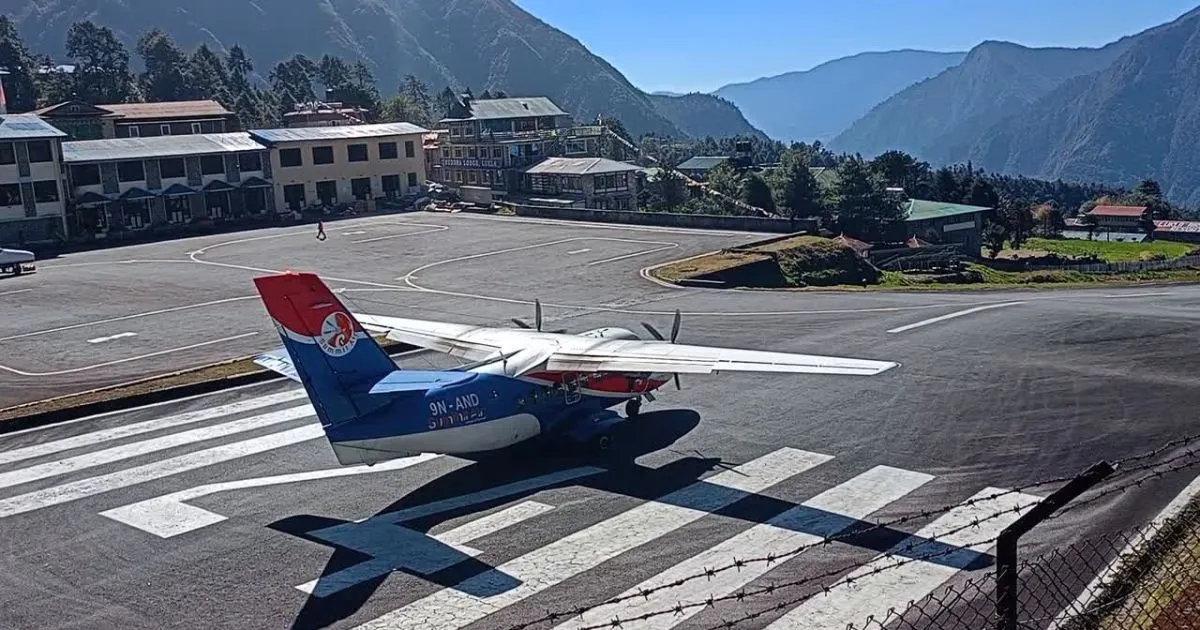
Frequently Asked Questions (FAQs)
How long is the flight from Kathmandu or Ramechhap to Lukla?
The flight takes approximately 30 to 35 minutes from Kathmandu and around 20 minutes from Ramechhap. However, flight times can vary depending on weather, air traffic, and routing conditions.
Is the Lukla flight safe?
Yes, the Lukla flight is considered safe when operated by certified pilots and reputable airlines such as Tara Air, Summit Air, and Sita Air. Moreover, strict Civil Aviation Authority of Nepal regulations ensure that only experienced aviators with specialised training handle these flights.
What happens if my Lukla flight is cancelled?
The airline will automatically rebook you on the next available departure, though delays can last hours or even days depending on weather conditions. Alternatively, you can charter a helicopter or trek overland from Jiri (7-10 days to reach Lukla) or Phaplu (2-3 days).
How early should I book a Lukla flight?
Book your Lukla flight as early as possible, especially during peak trekking seasons in spring (March-May) and autumn (September-November). Furthermore, early booking often secures better pricing and preferred departure times.
Can foreigners board the helicopter to Lukla?
Yes, foreigners can book a helicopter from Kathmandu to Lukla for faster, more flexible service. Additionally, helicopters can sometimes operate when fixed-wing flights are grounded due to weather.
What's the baggage limit for Lukla flights?
Most airlines permit 10 to 15 kilograms of checked baggage per passenger, plus a small carry-on. Moreover, excess baggage incurs additional fees, typically $1-2 per kilogram.
What is the best time to take the Lukla flight?
The best time is during spring (March-May) or autumn (September-November) when the weather is most stable. Furthermore, early morning flights offer the highest success rates, as visibility is typically clearest before midday cloud development.
How dangerous is Lukla Airport really?
Lukla is often described as the most dangerous airport in the world due to its short runway, steep gradient, and challenging mountain location. Nevertheless, with properly trained pilots, well-maintained aircraft, and strict operational protocols, the risk is managed effectively.
Can I trek to Everest Base Camp without flying to Lukla?
Yes, you can reach the Everest region without flying by trekking from Jiri (7-10 days) or from Phaplu/Salleri (2-5 days). However, these overland approaches require significantly more time and are less commonly used today.





